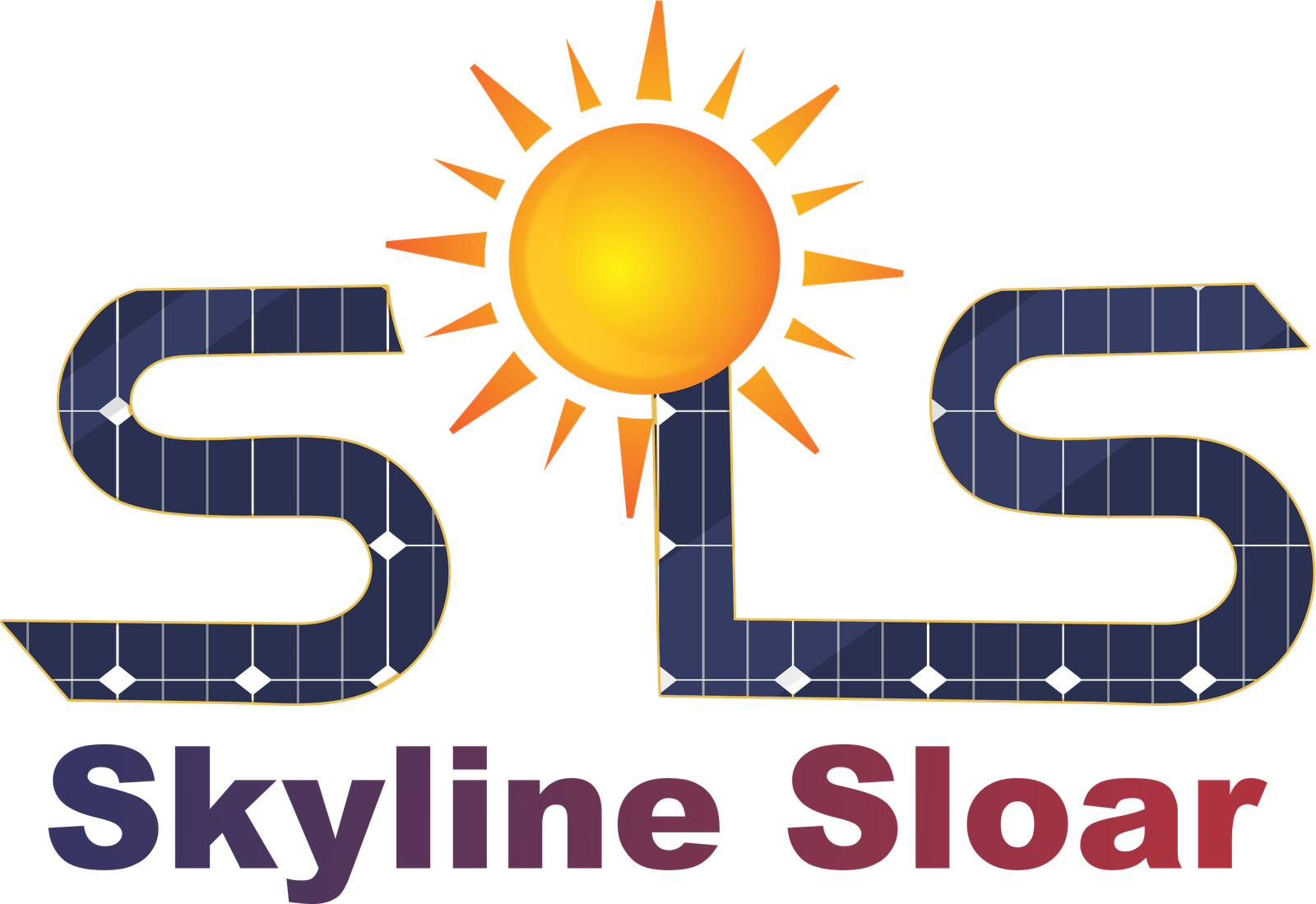What do Solar panels do?
A solar panel is a special kind of device that takes sunlight and turns it into electricity When sunlight hits them, they make electricity. People put them on roofs or in fields to make power for homes and buildings. It’s a way to use the sun’s energy to make electricity instead of burning fossil fuels..
TYPES OF SOLAR PANELS
Based on Material Composition:
Material composition refers to the substances that make up an object. In the case of solar panels, this typically includes silicon cells, tempered glass, aluminum frames, and a protective backsheet.
1. Monocrystalline Solar Panels:
- Monocrystalline panels are made from single-crystal silicon, resulting in a uniform dark appearance.
- They are known for their high efficiency, typically ranging from 15% to 22%, making them ideal for installations where space is limited.

2. Polycrystalline Solar Panels:
- Polycrystalline panels are made from multiple silicon crystals, giving them a speckled blue appearance.
- They are generally less expensive to produce than monocrystalline panels but have slightly lower efficiency, typically ranging from 13% to 16%.

3. Thin-Film Solar Panels:
- Thin-film panels are made by depositing thin layers of photovoltaic material onto a substrate such as glass
- Thin-film panels have lower efficiency compared to crystalline silicon panels, typically ranging from 7% to 13%, but they can perform better in low-light conditions and at higher temperatures

4. Bifacial Solar Panels:
Bifacial solar panels have the unique ability to generate electricity from both their front and rear sides. They can capture sunlight that reflects off surfaces such as the ground or nearby structures, increasing overall energy production.

5. Concentrated Solar Panels:
- Concentrated solar panels use lenses or mirrors to focus sunlight onto small solar cells. This concentration of sunlight increases the efficiency of the solar cells, allowing for higher energy production.
- These panels often have a more complex structure compared to flat-plate panels due to the additional optical components required for sunlight

Based on Special Features:
Special features are standout qualities of a product. In solar panels, these include efficiency, durability, lightweight design, anti-reflective coatings, bypass diodes, integrated microinverters, and compatibility with smart monitoring systems.
1. Bifacial Solar Panels
Bifacial solar panels have the unique ability to generate electricity from both their front and rear sides. They can capture sunlight that reflects off surfaces such as the ground or nearby structures, increasing overall energy production.

2. Concentrated Photovoltaic (CPV)
- CPV panels use lenses or mirrors to concentrate sunlight onto small, high-efficiency photovoltaic cells.
- Sunlight concentration can reach hundreds or even thousands of times, resulting in higher energy conversion rates.
- They are well-suited for regions with high levels of direct sunlight, such as desert areas.

3. Flexible Solar Panels
- Flexible solar panels are made using thin-film solar cell technologies, allowing them to bend or curve.
- They offer versatility in installation, conforming to non-flat surfaces such as curved roofs or vehicles.
- Lightweight and portable, making them suitable for applications such as camping, boating, or backpacking.

Based on Application and Integration
“Application and integration” refers to how a product is used and incorporated into various systems or environments. In the context of solar panels, this involves their installation and connection to electrical grids or standalone power systems for generating electricity.
1. Building-Integrated Photovoltaics (BIPV)
Building-Integrated Photovoltaics (BIPV) are solar panels integrated directly into building materials, such as roofs or windows.

2. Floating Solar Panels
Floating solar panels are photovoltaic (PV) systems installed on bodies of water, such as lakes, reservoirs, or ponds.

Based on Structural design:
“Structural design” refers to how a product is physically constructed to ensure durability and functionality. In solar panels, it involve arranging materials like glass and aluminum frames to withstand environmental factors while optimizing energy capture.
1. Flat-Plate Solar Panels
Flat-plate solar panels are traditional photovoltaic (PV) panels that consist of flat, rectangular modules

Based on Geographical Suitability and Installation:
“Geographical Suitability and Installation” involves evaluating if a location is suitable for solar panels based on sunlight exposure and local regulations. It also includes the process of physically mounting and installing the panels on roofs or other structures.
1. Flexible Solar Panels
- Flexible solar panels are made using thin-film solar cell technologies, allowing them to bend or curve.
- They offer versatility in installation, conforming to non-flat surfaces such as curved roofs or vehicles.
- Lightweight and portable, making them suitable for applications such as camping, boating, or backpacking.
- Can be integrated into various products, including tents, backpacks, or clothing, to provide portable power solutions.
- Typically encapsulated in durable materials to withstand environmental factors like moisture and UV radiation.
- Offer lower efficiency compared to traditional rigid panels but excel in applications where flexibility and portability are paramount.
- Continual advancements in technology aim to improve efficiency and durability, expanding their range of applications.
Based on watts:
Wattage categories for solar panels are often based on the power output they can generate. Here’s a common categorization:
- Low Wattage: Typically ranging from 1 watt to 150 watts.
- Medium Wattage: Ranging from 150 watts to 350 watts.
- High Wattage: Ranging from 350 watts to 500 watts or more.
These categories help consumers choose solar panels based on their energy needs and available space for installation.
conclusion
In conclusion, the diversity of solar panel types offers consumers a range of options to consider when transitioning to solar energy. Whether it’s the high efficiency of monocrystalline panels, the balance of cost and performance with polycrystalline panels, or the flexibility of thin-film panels, each type has its unique advantages and considerations. By understanding the characteristics and suitability of each type, individuals can make informed decisions to harness the power of solar energy effectively. As technology continues to advance, the future of solar panels looks promising, providing even more efficient and accessible options for sustainable energy generation.






